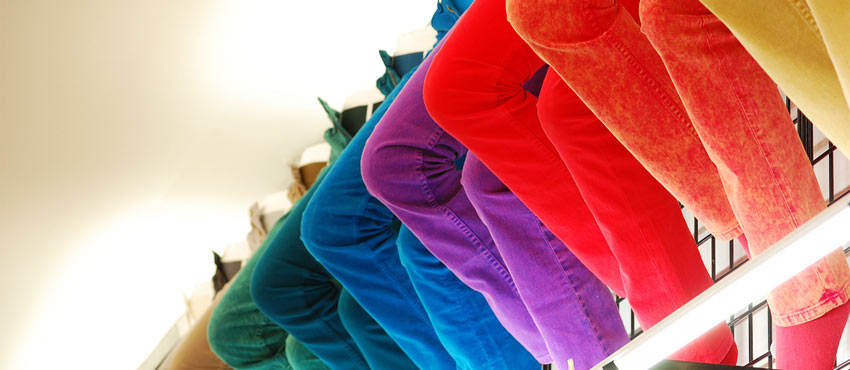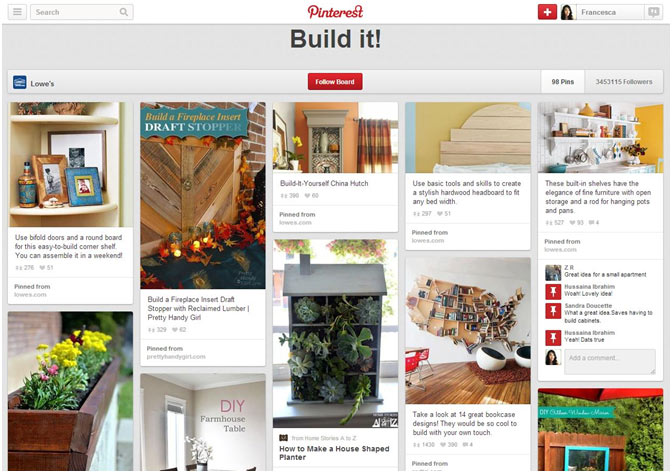With mobile devices being so ubiquitous these days, shoowrooming–the consumer practice of price-checking on their phones or viewing products in-store only to purchase them online–is more prevalent than ever. According to a survey by Vibes, 44% of consumers say that “they frequently use their smartphone in-store to comparison shop/buy from a competitor.”

As a result, some retailers have resorted to slashing their prices to match whatever’s the lowest price online. This isn’t an ideal strategy, though, because it would likely kill your profits and attract not-so-loyal customers.
Beating showrooming can’t be done by competing on price alone. Instead, you need to differentiate your business and find more creative ways to attract shoppers into your store. Need ideas on how to do that? Here are seven:
1. Build a fun and memorable store
Give your customers a unique and memorable in-store experience–something that they wouldn’t get from ecommerce sites. Let them interact, demo, and have fun with your products while they’re inside your store and find ways to use mobile technology to your advantage.
For example, Make Up For Ever, the cosmetics subsidiary of LVMH, installed iPad stations inside Sephora boutiques in Las Vegas, New York, and Costa Mesa. Using the iPads, shoppers were able to access face charts for exploring make-up combinations and they could even upload their own photos for a virtual makeover. To add to the fun, customers were given the options to share their shopping experience on Facebook and Twitter.
The iPad stations were so successful that Make Up For Ever decided to roll out the program to an additional sixty Sephora Stores.
Store manager Jessica Hair-Anderson told the Los Angeles Times that the iPad stations added a “cool factor” that brought young shoppers into their stores. “When people come into the boutique, it’s all very new and exciting visually,” she told the LA Times, adding, “It also makes our jobs easier, because if we are busy with another customer, it gives our clients something to do, so it doesn’t feel like they’re waiting.”
Do note that adding a “cool factor” isn’t always about technology. A store’s layout and interior design can do wonders in drawing and keeping people in. Ever wonder why Victoria’s Secret stores are almost never empty? One of the reasons is that the company invests a lot in making their stores look beautiful and exciting through sexy designs and lighting. Its flagship store in New York even has marble floors and chandeliers.
How can you make each shopper’s experience more memorable? Are there any special touches or design changes that you can implement? How can you incorporate social media or mobile into the browsing or shopping process? Explore your options and test them out in your store.
2. Include extra services with your products
Online retailers usually just ship products and let customers sort or assemble everything themselves. If you’re selling products that need to be set-up or put together (such as electronics, furniture, or appliances), consider offering complimentary set-up services.
Perhaps a free software installation package to get electronics up and running or complimentary furniture assembly services for shoppers who purchase x amount of goods.
Also see if you can offer same-day or next-day deliveries for your merchandise to further entice consumers to buy from you instead your online competitors.
3. Market your products on Pinterest
Pinterest has a huge impact on consumers, so if you’re not on it yet, you should really consider creating an account. A survey by the Harvard Business Review study entitled How Pinterest Puts People in Stores, revealed that a whopping 79% of Pinterest users said that pinning an item influenced their decision to buy it.
Utilize the site to market your products. Encourage customers to follow you and keep them engaged by posting awesome, share-worthy images. Think your images aren’t “pinnable” enough? Don’t fret. Even if you’re not in the fashion or food industry where products tend to look prettier, you can still make your products pin-worthy by putting them in the right context.
How can your products make people’s lives better? Capture the answer in an image and pin away.

Take Lowe’s, for example. Instead of pinning photos of hardware tools or gardening equipment, the home improvement retailer posts project ideas and DIY décor that make use of the products that it sells. Lowe’s has been doing such a great job at pinning stuff that according to Pinterest, pins from the store “regularly get tens of thousands of repins.”
The store’s most popular pin so far is a create-your-own-colorful-doormat project that has gotten more than 200,000 repins (and likely a whole lot of customers too!).
4. Eliminate lines and other checkout hassles
Long lines, “cash only” policies, and other checkout hassles can turn customers away, so it’s best to optimize the flow of your store and make it easy for customers to get in and complete their purchases.
One way of doing this is by replacing bulky cash registers and cashwraps with a mobile POS system. On top of being portable and easier on the eyes, mPOS solutions provide additional features such as the ability to email receipts and process mobile payments—both of which can improve checkout speed and give customers more options.
Want to take things a step further? Follow Nordstrom’s or Apple’s footsteps and provide mobile devices to each of your staff so they can provide mobile catalogs, check inventory, and process payments for customers from anywhere in the store.
5. Reward customers for checking-in
Is your business on Facebook, Foursquare, or Yelp? If so, then why not offer special rewards to shoppers who check-in? It encourages people to walk into your store, gives them an incentive to buy stuff (especially if your offer requires them to make a purchase), and it broadcasts the action to their friends, so you’ll get more exposure and social juice.
6. Keep in touch with customers—both online and offline
Utilize both online and offline channels to connect with customers and stay top of mind. Be active on Facebook, Twitter, and any other places online where your customers hang out. Do you have a blog? Regularly publish useful posts to keep customers informed and educated. Check in via email every now and then to announce special offers or to send birthday coupons and whatnot.
Don’t underestimate the impact of offline marketing strategies such as postcards, either. With the prevalence of text messages and e-mail, an old fashioned note reminding customers to swing by your store could be just the thing to help you stand out.
7. Use Wi-Fi to your advantage
It may seem counter-intuitive, but offering free in-store Wi-Fi can actually attract—and keep—people in your store. A study by the Acquity Group uncovered that 50% out of 1,500 smartphone owners “feel more confident making major purchases when free in-store Wi-Fi is available.” The study also found that 20% of smartphone owners would spend more time in the store if there’s free Wi-Fi.
Moreover, offering in-store Wi-Fi enables you to collect more customer information. You can, for instance, ask for people’s email address before connecting so you can touch base with them in the future.
There are also Big Data companies such as Brickstream and Aislelabs that enable retailers to track consumers’ in-store behavior using their phone’s Wi-Fi card. By leveraging these insights, retailers can identify shopping or behavioral patterns that they can use to improve their store’s layout, staff, and overall experience.
If you’re tired of people treating your store like a showroom, then you need it to stop acting like one. Don’t just “show” people your products, let shoppers experience them. Offer more value, and find ways to communicate your uniqueness from online stores and competitors.
Cover photo credit: longhairbroad

